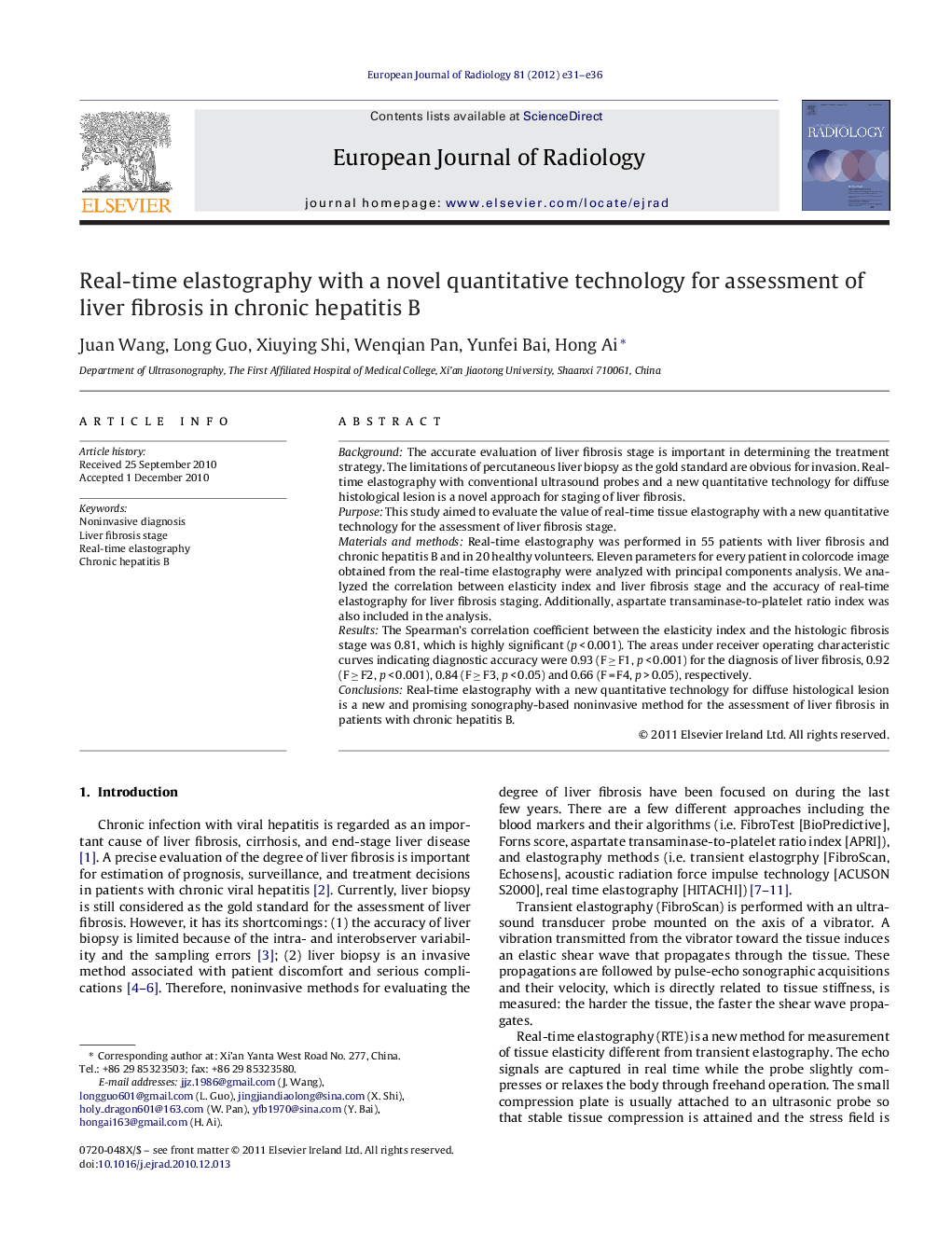| Article ID | Journal | Published Year | Pages | File Type |
|---|---|---|---|---|
| 4226298 | European Journal of Radiology | 2012 | 6 Pages |
BackgroundThe accurate evaluation of liver fibrosis stage is important in determining the treatment strategy. The limitations of percutaneous liver biopsy as the gold standard are obvious for invasion. Real-time elastography with conventional ultrasound probes and a new quantitative technology for diffuse histological lesion is a novel approach for staging of liver fibrosis.PurposeThis study aimed to evaluate the value of real-time tissue elastography with a new quantitative technology for the assessment of liver fibrosis stage.Materials and methodsReal-time elastography was performed in 55 patients with liver fibrosis and chronic hepatitis B and in 20 healthy volunteers. Eleven parameters for every patient in colorcode image obtained from the real-time elastography were analyzed with principal components analysis. We analyzed the correlation between elasticity index and liver fibrosis stage and the accuracy of real-time elastography for liver fibrosis staging. Additionally, aspartate transaminase-to-platelet ratio index was also included in the analysis.ResultsThe Spearman's correlation coefficient between the elasticity index and the histologic fibrosis stage was 0.81, which is highly significant (p < 0.001). The areas under receiver operating characteristic curves indicating diagnostic accuracy were 0.93 (F ≥ F1, p < 0.001) for the diagnosis of liver fibrosis, 0.92 (F ≥ F2, p < 0.001), 0.84 (F ≥ F3, p < 0.05) and 0.66 (F = F4, p > 0.05), respectively.ConclusionsReal-time elastography with a new quantitative technology for diffuse histological lesion is a new and promising sonography-based noninvasive method for the assessment of liver fibrosis in patients with chronic hepatitis B.
